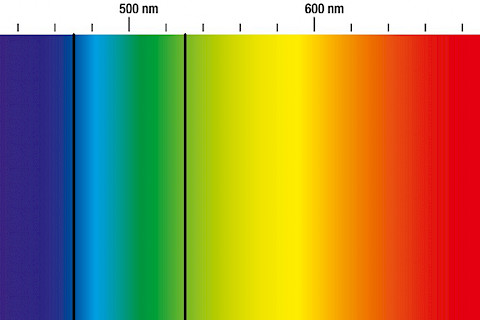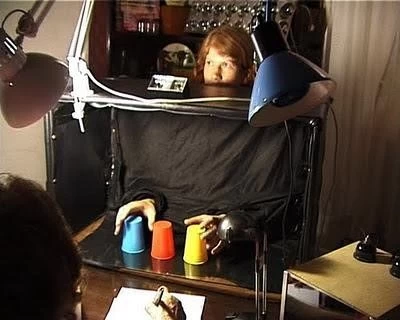

Dermo-Optical Perception
There are a lot of ways that a person can perceive things. While some are well known, the term Dermo-optical perception is probably foreign to a lot of people. I know that I myself had never even heard of it, until a few months ago. It is a term used in parapsychological literature and people have even tried to trick famed Skeptic James Randi claiming to have this ability in response to his 1 million dollar challenge. So let's explore Dermo-optical perception.
What is Dermo-Optical Perception
Otherwise referred to as DOP, Dermo Optical Perception is a parapsychological term in which a person has the ability to establish the colour of an item simply by touching it without physically seeing it. They may be able to tell you the exact colour, or if something is brighter or darker etc. It is believed they are receiving the information through touching something with their skin usually while blindfolded. It is something you may have heard of before as eyeless sight. While some people put this phenomenon in the same category as ESP (extra sensory perception), others believe that the tests performed over the years have not produced enough positive results.
Is it a form of ESP?
During the 20th century, as more claims of DOP arose, researchers and parapsychologists studied and investigated the claims in the hopes it was an extension of ESP. Their thinking was that our eyes only perceive a limited part of the electromagnetic spectrum. This we already know as we cannot see infrared or ultraviolet light for example. During daylight, our eyes show us the colours and shapes of our environment. Our skin itself is more sensitive to the electromagnetic spectrum of light which is shown by the way our skin tans or burns from UV light. In simple terms, we can't see UV light, but our skin reacts to it. So if our skin can react to things we cannot see, could it detect the colour of an item we cannot see with our eyes by using touch?
How is it tested?

Image Source: http://thegiarettas.blogspot.com/2011/10/susan-macwilliam-dermo-optics-2006.html
In the past, people who claimed to have this ability would simply wear a blindfold to demonstrate their abilities. Of course, a blindfold has its flaws and often the people being tested were very good at manipulating the blindfold. People would often pull at their faces or move their heads around in a way that would allow them to see the colours by peaking through the sides of the blindfold. Often when tested, they could only use their abilities when they supplied their own blindfolds. If they were supplied a special blindfold and asked not to touch their face or move, in most cases they were unable to identify the targets. As testing progressed, boxes were built similar to the picture above as a way to make it almost impossible for a person to be able to physically see the colours of the target items by peeking through a blindfold.
Is it a hoax or is there something to it?
Under a lot of testing circumstances, people were found to move around in such a way that they could see through the side of the blindfold (come on we have all done it!). In another article I have written, I have talked about people using deception while being participants in trials to try and demonstrate that they are actually capable of said ability, they just don't test well. So while a person may use deception in a trial, they may be trying to demonstrate or replicate something they were previously able to do. Unfortunately, though, any sort of deception
Researchers however do actually believe that under controlled conditions they have found some cases were able to demonstrate this ability. Their explanation however is not so much related to ESP but more to the sensation of touching a colour itself.
Dr Yvonne Duplessis was appointed director of a committee to investigate Dermo-optical sensitivity. Her conclusion is, ‘Controlled studies indicate support for the theory of dermo-optical sensitivity and perception.’
Dr Duplessis’s experiments have even led to a possible perfectly natural explanation. In her conclusions, she says, ‘Thus these different methods show that the thermal feelings induced by visible colors are not subjective, as it is generally admitted, and that the infrared radiations, situated in a far infrared range. are acting on every part of the body. This gives us possible grounds for concluding that also during ordinary visual perception of colored surfaces a human eye reacts not only to rays of the visible spectrum but also to infrared radiation emitted by these surfaces.’
More simply, Dr Duplessis’s experiments appear to show that coloured surfaces reflect energy as heat as well as light and that the eye (like other parts of the human body) is to some extent sensitive to heat as well as to light
Quite simply, we know just from our own interactions that certain colours heat up faster than other colours. It is why some people prefer to choose dark colours for the bricks of their houses. Black absorbs heat whereas white reflects it. Depending on the colour, it could feel heavier or slightly rougher. A person could with enough discipline train themselves to recognize these differences.
Another example is people referred to as 'blind travellers' those who navigate through life relying on the sensation of touch. Below is an example of one such study
Dermo-optical color perception refers to a person's ability to distinguish color surfaces through "skin perception" without the use of sight. The aims of this study were (1) to assess prior research findings which apparently demonstrated the existence of dermo-optical color perception and (2) to explore the possibilities of using color to indicate reference points for blind travellers. Three experiments were conducted with 20 congenitally blind subjects and a sighted blindfolded control group matched on age, sex, and education. In Exp. 1 on a discrimination task subjects were asked if two boards were of the same color and on a pairing task were asked to match a colored board with one among a set of three boards having the same color. In Exp. 2 the discrimination task was identical to that in Exp. 1, but instead of using boards perceived through haptic exploration, we used colored cubicles in which the whole body would be exposed to the color. In Exp. 3 subjects were asked to walk along the corridor of a labyrinthine set-up and to identify any changes of color they could perceive. The experiments were designed to provide measures of reliability of subjects' responses. Analysis showed little or no support for the ability to perceive color by dermo-optical means. The comparisons of the blind and the sighted control groups were nonsignificant. On the basis of our findings, the use of color to help blind travellers has to be rejected. The paper concludes with a discussion suggesting reasons for the contradictory results emerging from studies on dermo-optical color perception.
What about ESP?
On the other end of the 'spectrum', I guess it is worth considering the possibility given that people who are psychic feel that they can read the energy left behind on an item just by touching it. Psychometry is a psychical ability where a person is able to pick up an object and read its history intuitively. By touching the object, they may see impressions or images in their mind, they may taste or smell something, they may physically feel a sensation or they may even feel emotion. With psychometry, you are able to 'see' by using touch. So while we may or may not be able to read colours, energy could be a different story. It is an area that sadly has been plagued with people who falsely claimed to have the ability, but it doesn't mean that there is nothing to it. Whether a person can tell the difference of a colour by feeling the surface or picking up the information telepathically, it does bring the sensation of touch into play - something we often neglect when we look at paranormal phenomena. Sight and sound are the two general senses we concentrate on. In fact people often use sensory deprivation techniques to block their sense of sound of and sight. Perhaps we should start looking at 'touch' and its impact a little bit more!
References
https://www.oxfordreference.com/view/10.1093/oi/authority.20110803095712241
https://psi-encyclopedia.spr.ac.uk/articles/dermo-optical-perception
http://thegiarettas.blogspot.com/2011/10/susan-macwilliam-dermo-optics-2006.html
http://www.skepticalaboutskeptics.org/examining-skeptics/richard-milton/richard-milton-the-skeptics-dictionary/
Passini R, Rainville C. The dermo-optical perception of color as an information source for blind travelers. Percept Mot Skills. 1992 Dec;75(3 Pt 1):995-1010. doi: 10.2466/pms.1992.75.3.995. PMID: 1454507.
If you enjoy LLIFS, consider buying me a book (otherwise known as buy me a coffee but I don't drink coffee and I LOVE books). Your donation helps to fund the LLIFS website so everyone can continue to access great paranormal content and resources for FREE!

Top pages with similar subjects
Don't forget to follow the Facebook page for regular updates
Join the mailing list to receive weekly updates of NEW articles. Never miss an article again!
Buy the latest and past issues Haunted Magazine
Check out the books written by LLIFS